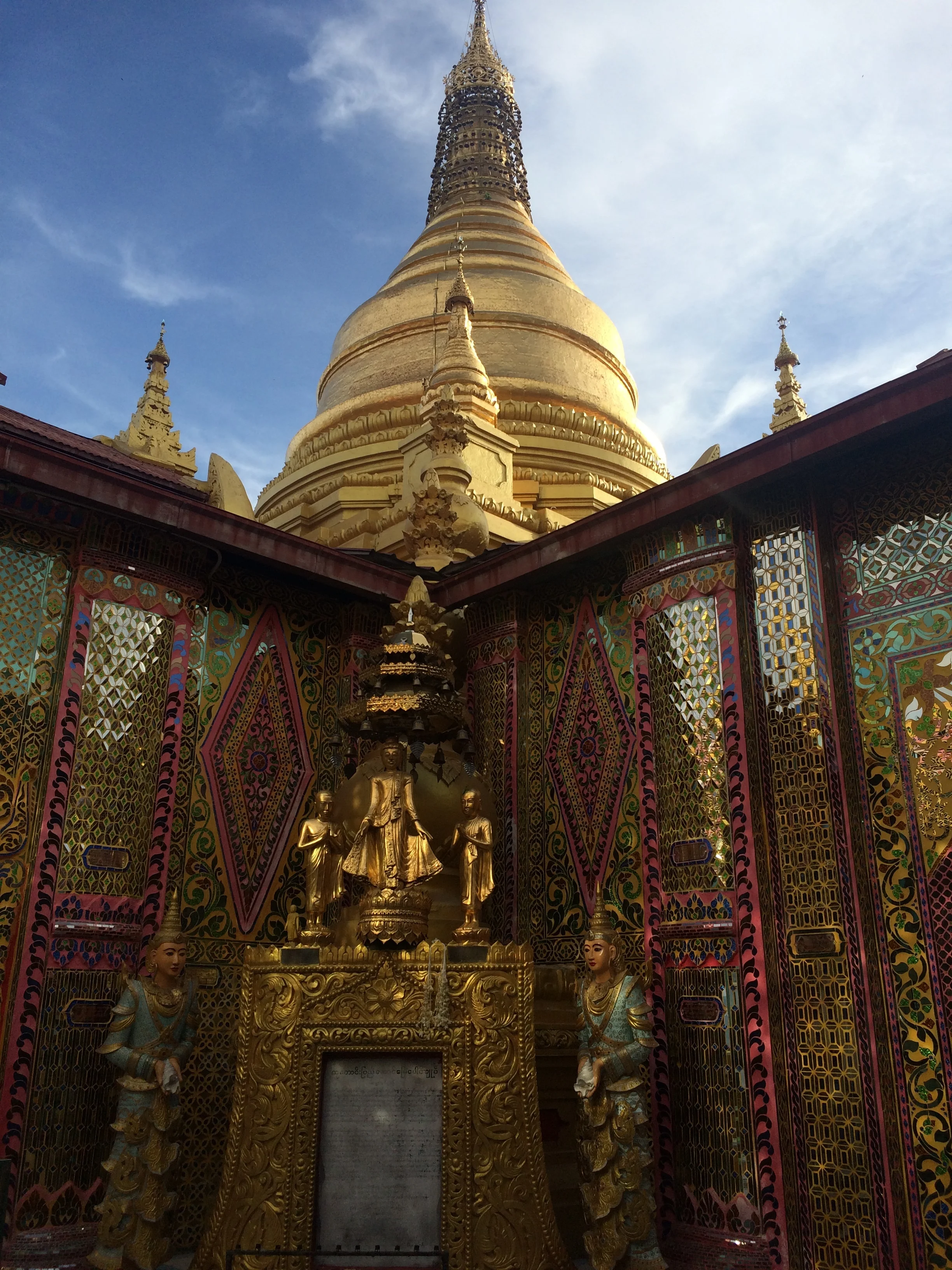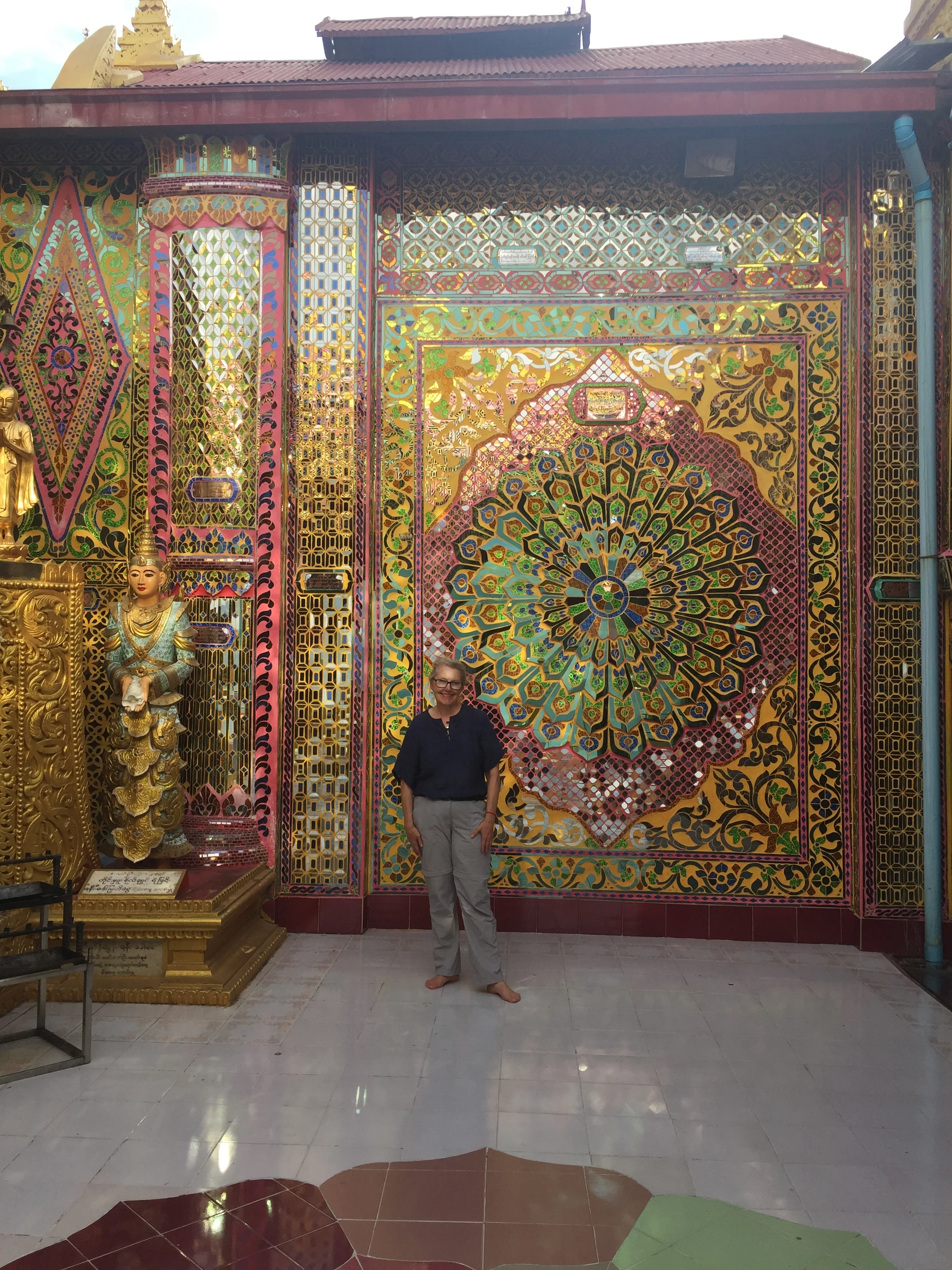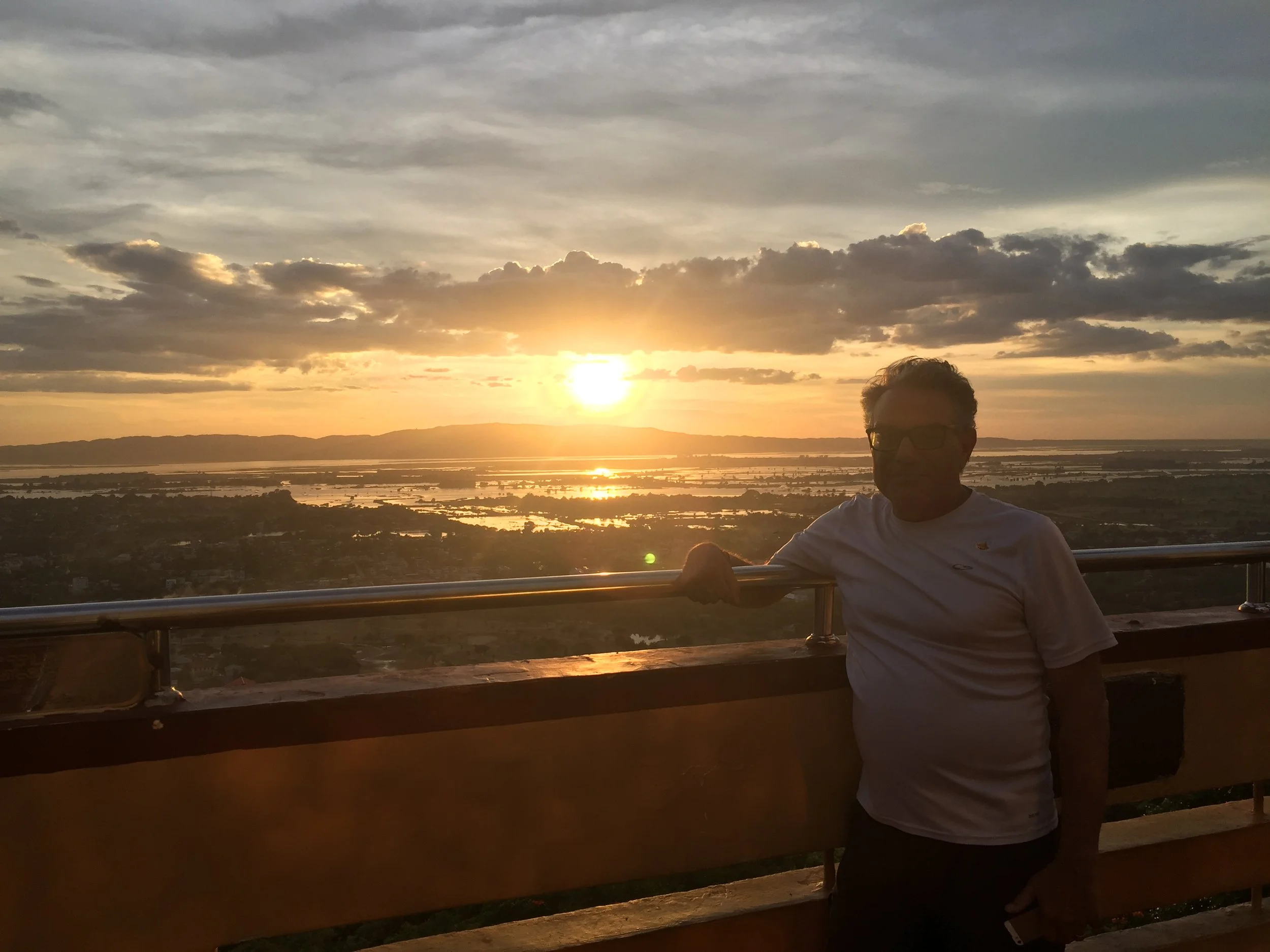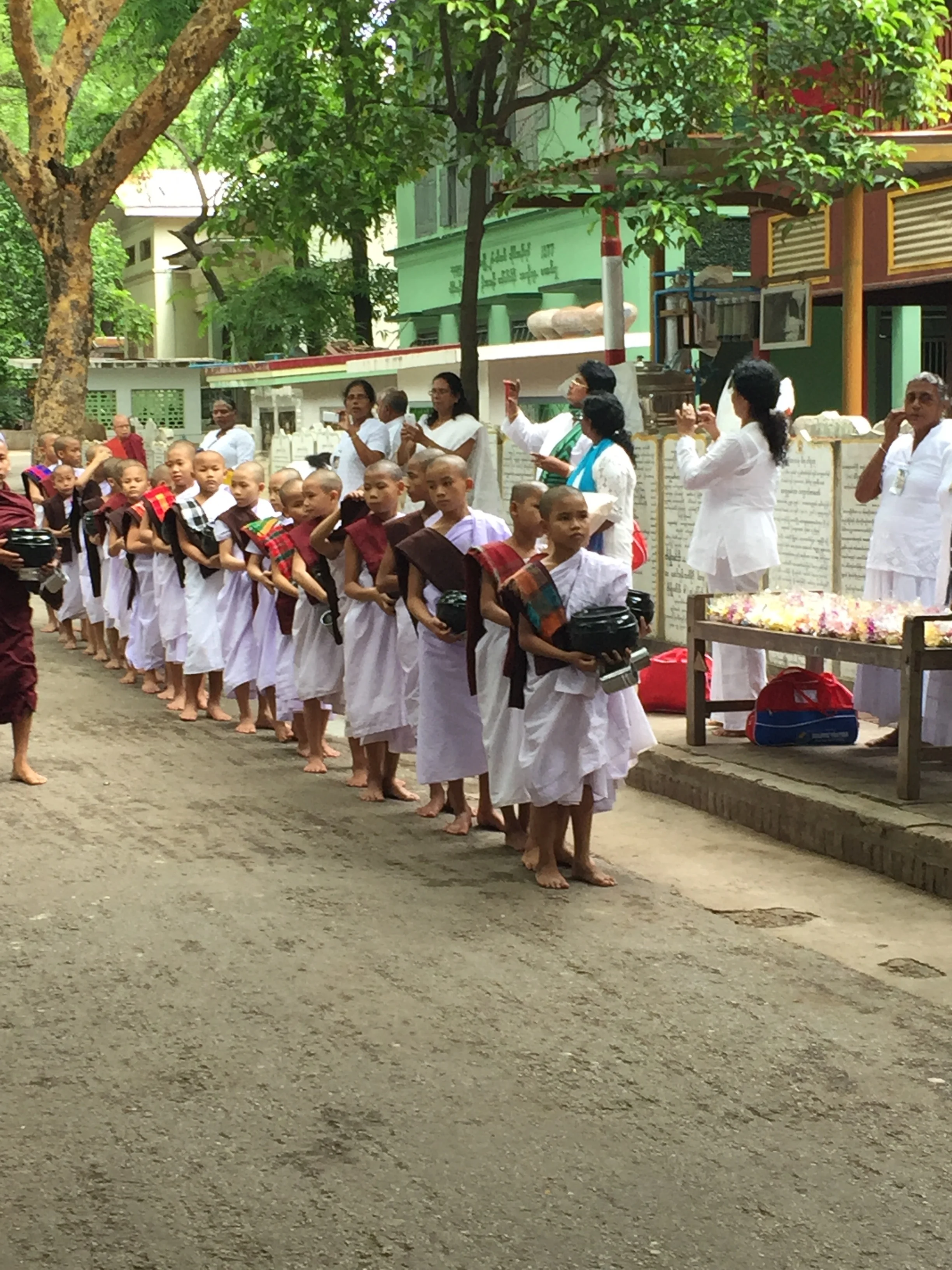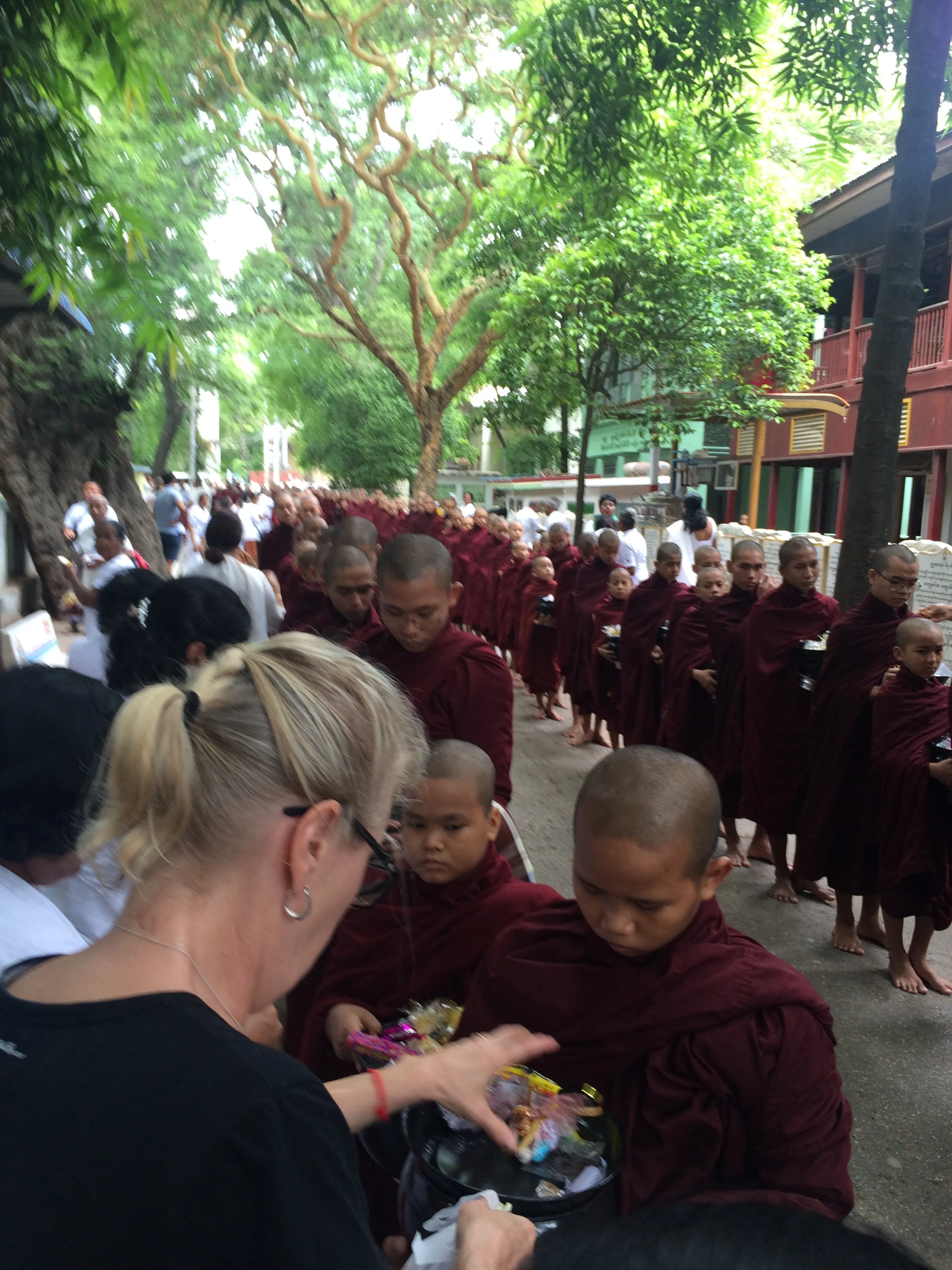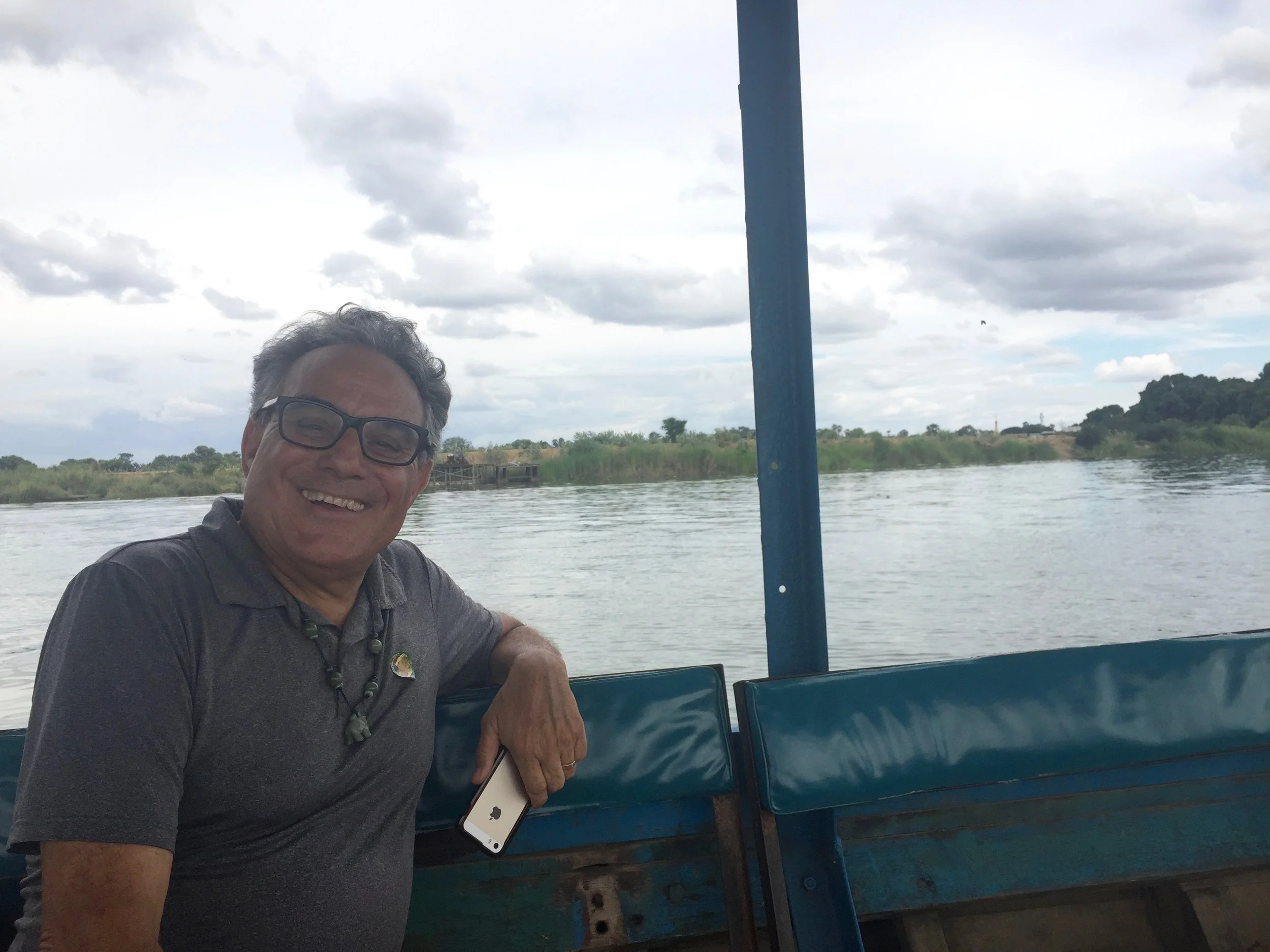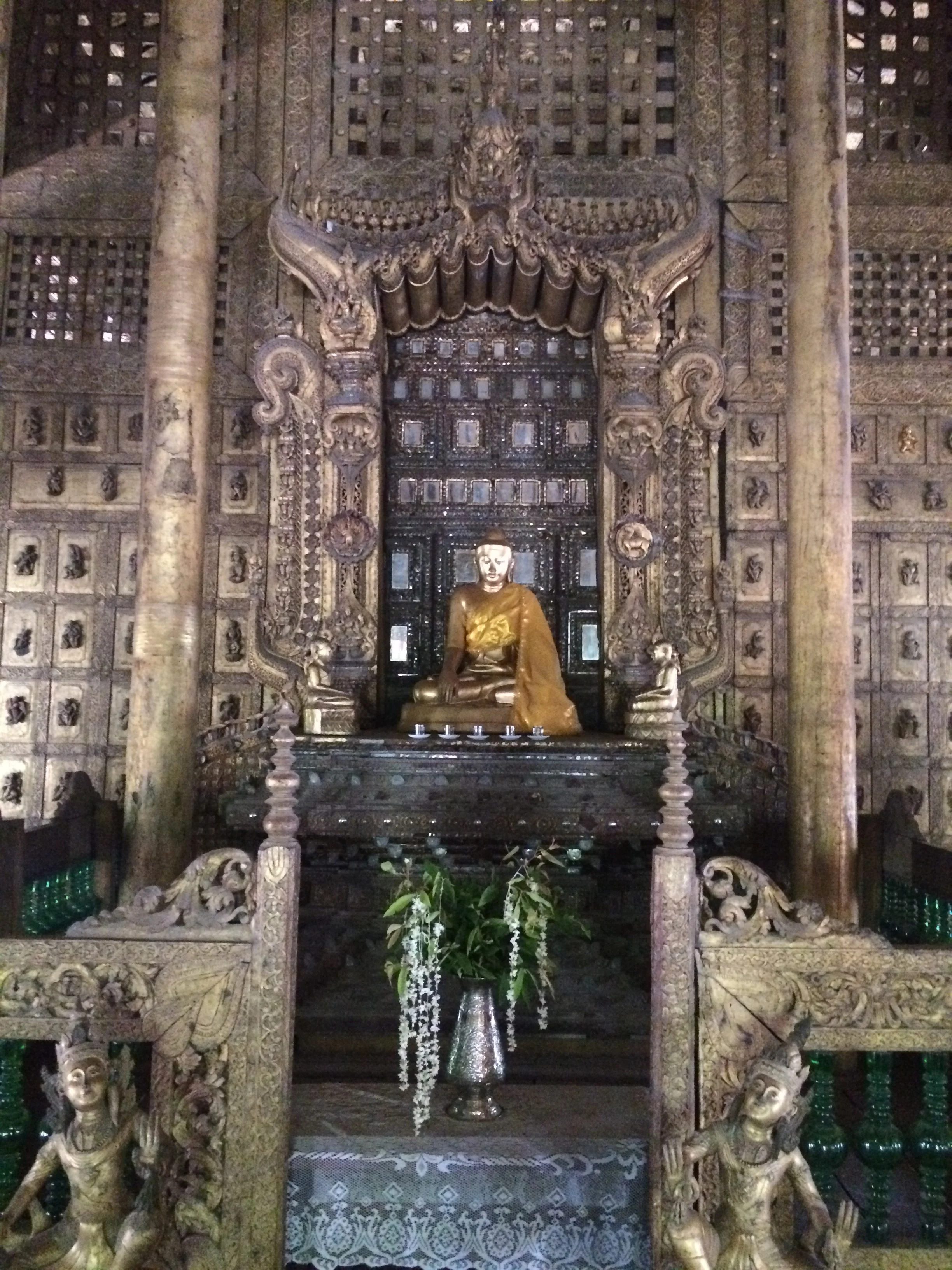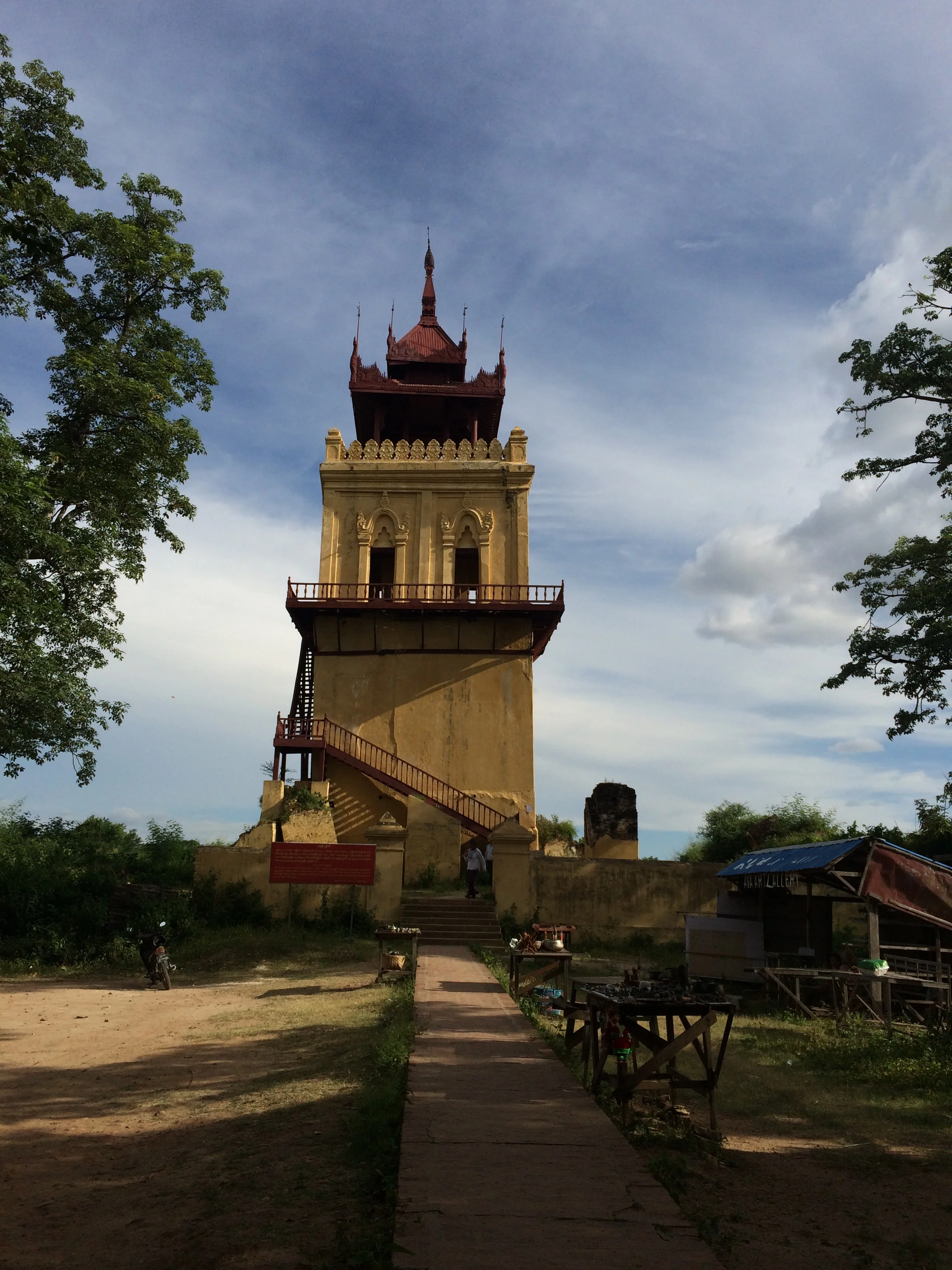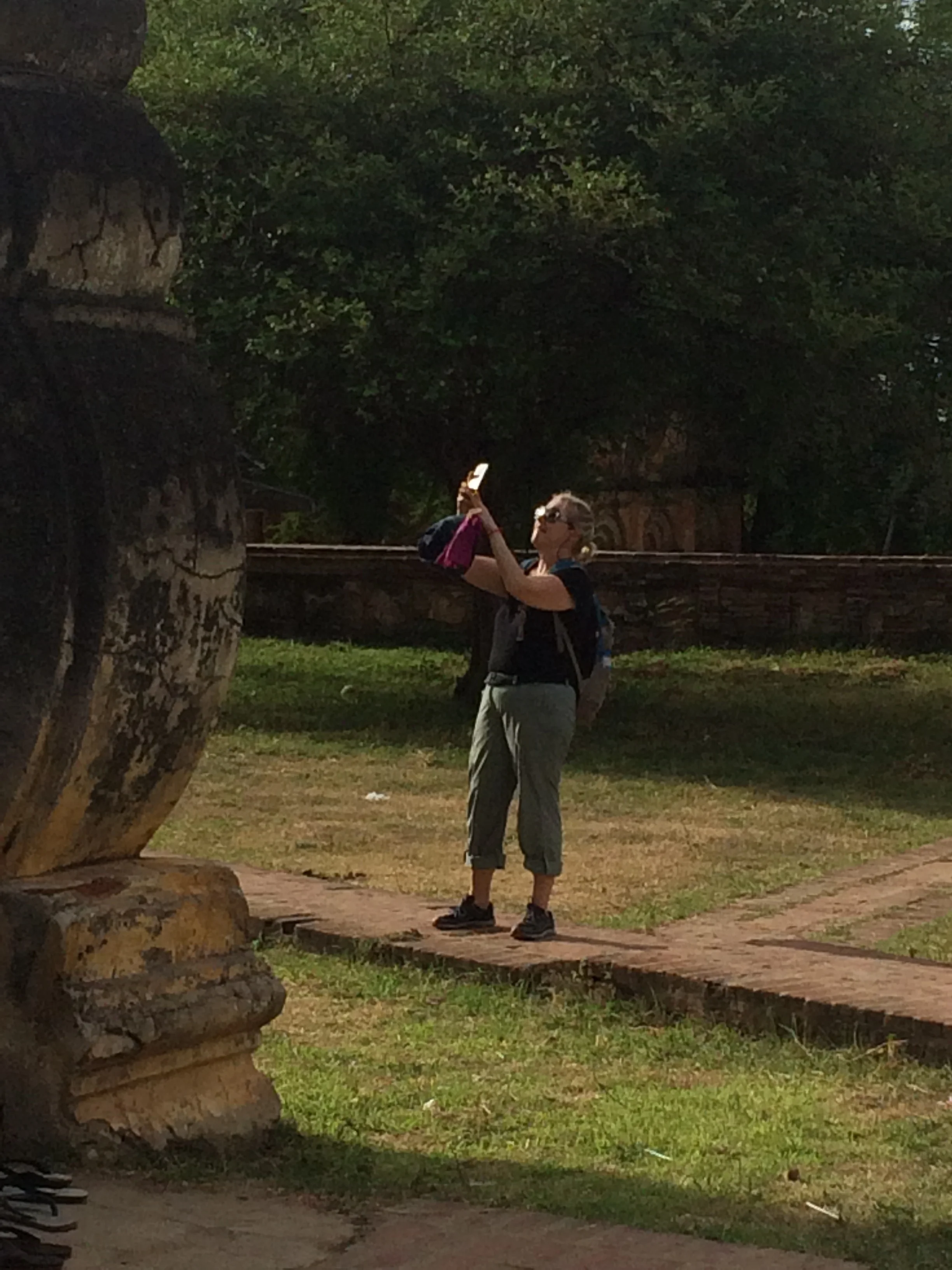Mandalay is the second biggest city in Myanmar with a population of 1 million. It is booming economically and is culturally vibrant. It became the capital of the Burmese empire in 1861 but that was short lived after British occupation in 1886. On our bus ride into town we passed the Mandalay Royal Palace which is fantastically large with high walls and wide surrounding moat. This will have to be one of our first attractions. The Triumph Hotel is very nice. We are in a connected bungalow type room across from the pool and restaurant. The staff is very chipper, quick to smile and say hello. They were very helpful in putting together our 30th wedding anniversary celebration: flowers, massage and spa trip, transports, fancy dinner, and hotel store of nice clothing.
The best sights in Mandalay are spread out around town and in the surrounding areas which where the historic locations of the country’s capital. We hired a driver Mr. Winn, for 2 days. He was great, both following our itinerary and making good suggestions to enhance the experience.
On our first, we left at 8:30 am to hit the main sites starting with “Starving Buddha” pavilion. This represented the time when Buddha apparently fasted for 6 years to challenge his spirituality. Then we went to the huge “Reclining Buddha” figure with holy symbols carved into the feet of the Buddha.
Next we made a quick stop to see and understand how gold leaf is made. Is is an important tradition for the men to purchase packets of gold leaf and add it to the Buddha temples. Making the leaf is done by hand and is hot hard work
Pounding gold leaf by hand. The bowl of water is a type of timing when the smaller bowl sinks the pounding time is up
Next went to the famous “ Mahamuni Pagoda where the 13 ft tall main Buddha figure believed to be 2000 years old and is covered each day with more Gold Leaf,
Our next stop was the large royal palace. All but 2 building burned down in WWII but the grounds are very nice and there is a newer replica palace.
Replica of the Palace
Next we went to the temple of the “largest Book in the world”, called Sandra Muni Paya. This is a complex of hundreds of one story pagoda set out in straight rows each containing carved stone tablets setting forth the teachings of Buddha. The sitting King of Siam thought the British invaders would burn the paper books of Buddha’s teachings but that they would appreciate the architecture of this site and spare it from ruin; It worked—the teachings were cleverly preserved.
Each Pagoda has a stone carved tablet, the grounds are huge, this is just one side of it
By lunch is is over 100 degrees again and we head back for a rest. After our siesta, we drove to the top of Mandalay Hill, the 760 ft high site overlooking the sprawl of Mandalay. We enjoyed overlooking the countryside and watching the sunset from the the summit and did converse with a young monk who wanted to practice his English speaking skills. He was actually a very good speaker. We headed home at dusk and decided on eating at the hotel. Check out the photos.
On the 2nd day we left the city and took a day trip to the 4 ancient cities close to Mandalay.
We started and ended in “Amarapura’ aka the “City of Immortality”. First stop is a visit to the prestigious monastery “Maha Ganayon Kyaung. Here, we see an inspiring sight where hundreds of the brightest young novices and student monks breakfast at 10:30 am by walking with their bowls through a gauntlet of visitors who give offerings to each monk as they proceed to the mess tables. They are all wrapped in purple robes, with shaved heads and bare feet. It is hard to explain the emotional shock that overwhelms when you realize the depth of spirituality that is surrounding you. Imagine, for example how you would feel if hundreds of young men, Christian priests or ministers to be, walked passed relying on your generosity for food and sustenance. We where invited to stand with a group of lovely ladies from Sri Lanka, all dressed in white, who allowed us to share their offerings with the monks. Their obvious reverence for these young men added to our respect and spirit. Just a beautiful experience.
During the late morning and early afternoon we traveled to Mingun and Sagaing.
Mingun: The trip to the riverside village of Mingun requires roller coasting along the rural roads through small, longstanding hamlets of bamboo houses, where farm animals roam on the streets. The draw here is the “what it could have been” inquiry. The Mingun Paya is the remains of a gigantic brick structure that was a planned 492 ft Stupa that suffered multiple earthquakes; the entrance walkway from the river was guarded by 2, three story high lions that also suffered damage. To understand the size of this broken structure, know that the displayed Mingun Bell is the world’s largest uncracked bell.
Next to Sagaing: Across the Ava Bridge is the Stupa laden hilltops where Burmese Buddhists come to meditate and relax. The key Monasteries are on Sagaing Hill. Here the views are so stunning that we just sat at the top for an hour and overlooked the rolling hills
In the later afternoon we traveled to Inwa (called Ava by the Brits). This area is cutoff by rivers and canals, but was the capital of the country for 4 centuries. Our driver dropped us at a jetty where we took a small boat across to the river to the remaining village. Upon arrival we hired a horse cart to make a two hour loop around Inwa’s beaten two track dirt roads to visit the crumbling ancient sites, including the towering 1834 Teak monastery supported by 267 posts and covered by intricate carved figures. This structure was really an unexpected treasure to see.
Another "Tomb Raider" site
We also enjoyed the 1822 “Ok Kyaung” brick and stucco monastery that was in disrepair but beautiful anyway—we felt like tomb raiders again. Finally we saw the 88 ft “Nanmyin” watch tower that was once simply a corner of a great palace that no longer exists. It leans badly, so climbing up the stairs is prohibited. The bumpy, swaying road took us through the banana fields and small villages lined with platform houses, and cattle, horses, and chickens, finally reaching the jetty. As we waited for our boat, we noticed that another boat dragging a dead cow carcass, stiff with legs straight up, as it passed the dock where women where washing clothes and bathing children. That was weird. In any event, we rejoined our driver to go to the teak bridge for sunset.
At the end of the day we returned to Amarapura to view the sunset from the “U Bein” bridge, apparently the world’s longest teak wood bridge at 1300 yards. The solar reflection off the river filled with small transport boats was another treat. At the end of the long day, we were hot and tired but greatly inspired by the excursion.
The next day we celebrated our 30th wedding anniversary by relaxing at the pool and spa, eating a creamy cake ordered from the hotel, smelling the roses, with a great dinner after dressing up.
Sunset at the bamboo bridge







